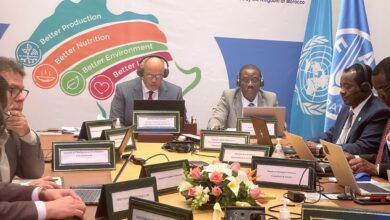Why Greenhouses Failed Kenyan Farmers

In March, Peter Wangai, the CEO of Goldenscape Greenhouses, was charged with defrauding Kenyan farmers in a greenhouse scam. Through his company, Wangai promised unsuspecting investors returns of as high as $2,750 every six months for each greenhouse investment made through his firm. Local dailies reported that some customers lost as much as $18,400 in the well-orchestrated scheme. While the scam is a sad tale of exploitation, it illustrates the sorry state of greenhouses in Kenya.
Greenhouses were first introduced in the country in the early 2000s. Typically, they consist of walls and roofs made of solar absorbent material, enclosing crops planted in the structures. The idea here is to create optimal conditions for plant growth within the greenhouses to increase crop productivity. By doing so, farmers investing in the structures can expect improved yields compared to conventional farming methods. While the technology seems to work well outside of Africa, the situation is different in Kenya, where sights of abandoned greenhouses are fairly common. Research confirms this sad state by noting that at least 30% of all greenhouses in the country are nonfunctional. These statistics lead to an important question: why has the technology failed despite its immense potential and success in other countries?
The reasons cited by one study for the failure of greenhouses include pests, crop diseases, limited water supply, investment costs, and limited understanding of the technology by farmers. Additional reasons from another study include political interference and poor water quality. One thing stands out from these findings, and that is context. The term context here refers to the unique circumstances of Kenyan farmers compared to other regions of the world. Without proper contextual information, agricultural solutions borrowed from other areas and imported into Africa fail miserably. So what lack of contextual information may have led to the failure of greenhouses in Kenya, you ask?
First, like many African countries, Kenya is dominated by small-scale farmers, who account for over 80% of local production. These farmers are mostly poor, and their farming is largely for subsistence purposes. In the few instances when farming leads to higher returns, the cash goes to other commitments such as healthcare and education. In short, farmers hardly earn enough to come out of their vicious cycle of poverty to at least reinvest profits back into their farms. For such farmers, the operations and maintenance costs of greenhouses are just too high. This point is perhaps why some researchers list investment costs as a probable reason for the failure of greenhouses. While many excited farmers could raise the cash for installing the structures, their income level could not allow them to continue operating the greenhouses, leading to the eventual failure of the technology.
Secondly, the level of agricultural knowledge of Kenyan farmers is worth noting. While most farmers are fairly literate, more specialized knowledge is required for agricultural operations, including greenhouses. Previously, the government had an elaborate extension services system that would fill this information gap by offering farmers the technical data they needed for their farming operations. Unfortunately, with the promulgation of the new constitution in 2010, agricultural extension services were devolved to the county level. Many counties failed to effectively manage the extension services, killing this information avenue for farmers. As a result, farmers were left with little to no information for their agricultural operations. With this in mind, it is not surprising that some studies observe that lack of technical know-how limits the success of greenhouse technology.
A third and perhaps the most crucial contextual information worth noting is climate. Kenya enjoys a tropical climate that is quite different from other countries. While it is understandable to use greenhouses in the West, where seasons such as winter demand the use of the structures to create optimal crop growth conditions, the reasoning behind using greenhouses in Kenya’s climate, more so for non-perennial crops, still baffles me. For one, the all-year-round tropical climate in the country provides adequate conditions for plant growth, rendering the structures unnecessary. A study conducted in Kenya’s coastal regions affirms this point by observing that the effectiveness of the greenhouses in the area is as low as 10% of the estimated potential. The region has a hot and humid climate. Shed nets would work better for crops in the area compared to greenhouses.
A final and perhaps sadder reason for the failure of greenhouses in Kenya is perception. The idea that Western technologies are the silver bullet for transforming agriculture into a profitable venture is common among many farmers. Peter Wangai knew this all too well. Preying on this perception, Wangai promised farmers returns that were too unrealistic for any keen eye. Nevertheless, many still bought into the idea. After all, it was not normal farming; rather, it was a reliable Western innovation that would undoubtedly deliver returns as it does outside of Kenya.
Wangai would reiterate these statements, receiving audiences from even the country’s major news outlets. Later, when the scam was uncovered, people blamed media houses for failing to fact-check Wangai’s information. While that may be true, another possible reason why people fell for the scam is the notion that Western technologies are quick money-making schemes. The perception may also be why many people invested in greenhouses without conducting proper research on the technology. Predictably, the technology failed for most of them.







